Related Research Articles

An amusement park is a park that features various attractions, such as rides and games, as well as other events for entertainment purposes. A theme park is a type of amusement park that bases its structures and attractions around a central theme, often featuring multiple areas with different themes. Unlike temporary and mobile funfairs and carnivals, amusement parks are stationary and built for long-lasting operation. They are more elaborate than city parks and playgrounds, usually providing attractions that cater to a variety of age groups. While amusement parks often contain themed areas, theme parks place a heavier focus with more intricately-designed themes that revolve around a particular subject or group of subjects.
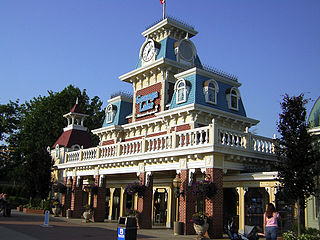
Geauga Lake was an amusement park in Bainbridge Township and Aurora, Ohio. It was established in 1887, in what had been a local recreation area adjacent to a lake of the same name. The first amusement ride was added in 1889, and the park's first roller coaster – later known as the Big Dipper – was built in 1925. The park was sold to Funtime, Inc., in 1969 and was expanded over the years with additional rides and amenities. Funtime was acquired by Premier Parks in 1995, and for the 2000 season, they re-branded Geauga Lake as Six Flags Ohio, adding four new roller coasters. The following year, Six Flags bought the adjacent SeaWorld Ohio and combined the two parks under the name Six Flags Worlds of Adventure.

Philadelphia Toboggan Coasters (PTC) is one of the oldest existing roller coaster manufacturing companies in the world. Based in Hatfield, Pennsylvania, it was established in 1904 by Henry Auchey and Chester Albright under the name Philadelphia Toboggan Company. The company manufactured carousels, wooden roller coasters, toboggans and later, roller coaster trains.

Luna Park Sydney is a heritage-listed amusement park located at 1 Olympic Drive in the harbourside suburb of Milsons Point, New South Wales, Australia, on the northern shore of Sydney Harbour. The amusement park is owned by the Luna Park Reserve Trust, an agency of the Government of New South Wales, and was added to the New South Wales State Heritage Register on 5 March 2010.

Luna Park Melbourne is a historic amusement park located on the foreshore of Port Phillip Bay in St Kilda, Melbourne, Victoria. It opened on 13 December 1912, with a formal opening a week later, and has been operating almost continuously ever since.

American Coaster Enthusiasts (ACE) is a non-profit organization focusing on the enjoyment, knowledge, and preservation of roller coasters as well as recognition of some as architectural and engineering landmarks. Dues paying members receive the quarterly magazine RollerCoaster! and bi-monthly newsletter ACE News. Amusement parks have also invited members to exclusive ride events at amusement parks as well as sneak peek events at new roller coasters under construction.
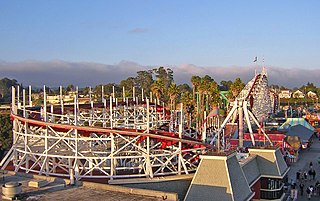
The Giant Dipper is a historic wooden roller coaster located at the Santa Cruz Beach Boardwalk, an amusement park in Santa Cruz, California. The Giant Dipper, which replaced the Thompson's Scenic Railway, took 47 days to build and opened on May 17, 1924 at a cost of $50,000. With a height of 70 feet (21 m) and a speed of 55 miles per hour (89 km/h), it is one of the most popular wooden roller coasters in the world. As of 2012, over 60 million people have ridden the Giant Dipper since its opening. The ride has received several awards such as being named a National Historic Landmark, a Golden Age Coaster award, and a Coaster Landmark award.
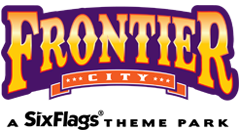
Frontier City is a western-themed amusement park in Oklahoma City. It is owned by EPR and operated by Six Flags. The park originally opened in 1958. Frontier City is one of three Six Flags parks that are not currently branded as a Six Flags park, with Great Escape in Queensbury, New York and La Ronde in Montreal, Quebec, Canada being the other two. Frontier City is the second-oldest Six Flags park behind Six Flags New England.
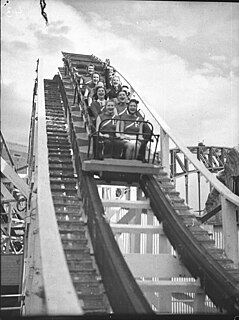
The Big Dipper was a wooden roller coaster operating at Luna Park Sydney from 1935 until 1979. It was demolished in 1981. First constructed in 1930 to an American design, the wooden Big Dipper roller coaster was a mainstay of Luna Park Glenelg during its four years of operation. The ride was dismantled and shipped to Sydney when the Glenelg park went into voluntary liquidation in 1934, and became the biggest attraction of the newly opened Luna Park Milsons Point.
John A. Miller was an American roller coaster designer and builder, inventor, and businessman. Miller patented over 100 key roller coaster components, and is widely considered the "father of the modern high-speed roller coaster." During his lifetime, he participated in the design of approximately 150 coasters and was a key business partner and mentor to other well-known roller coaster designers, Harry C. Baker and John C. Allen.

Camden Park is a twenty-six acre amusement park located near Huntington, West Virginia. Established in 1903 as a picnic spot by the Camden Interstate Railway Company, it is one of only thirteen trolley parks that remain open in the United States. Whereas most trolley parks were located at the end of trolley lines, Camden Park is unusual in that it was built where riders traveling between Huntington and nearby cities would stop to change lines. Not long after opening, the park soon gained a carousel and other roadside attractions. Camden Park is West Virginia's only amusement park. The park is home to more than thirty rides and attractions, including a full-size traditional wooden roller coaster, the Big Dipper, and several other vintage rides.

The Allan Herschell Company specialized in the creation of amusement rides, particularly carousels and roller coasters. The company manufactured portable machines that could be used by traveling carnival operators. It was started in 1915 in the town of North Tonawanda, just outside Buffalo, New York, USA.

Big Dipper was a wooden roller coaster located at the defunct Geauga Lake amusement park in Bainbridge Township, Ohio. Originally opened in 1925 as Sky Rocket, it was renamed Clipper in the late 1940s and eventually Big Dipper in 1969. It was the oldest operating roller coaster in Ohio and seventh-oldest in the United States when it closed in 2007. Designed by John A. Miller, the Big Dipper was also one of the last remaining roller coasters in the world from the designer. American Coaster Enthusiasts awarded the coaster its ACE Coaster Classic and ACE Coaster Landmark designations. Efforts to sell, preserve, and restore the ride were unsuccessful. The ride was demolished on October 17, 2016.
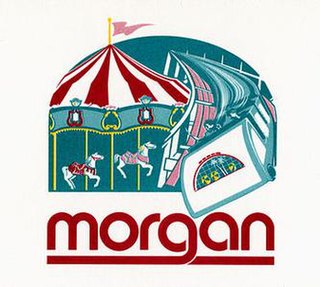
D. H. Morgan Manufacturing, later simply known as Morgan, was a manufacturer of roller coaster trains, custom amusement rides, roller coasters, children's rides and other amusement devices. Founded in 1983, the company was originally headquartered in Scotts Valley, California. In 1991, the company moved to La Selva Beach, California, and into a new 55,000-square-foot indoor manufacturing facility. That facility was later increased to 75,000 square feet. The company produced a variety of rides from 1983 until 2001, but is probably best known for its steel hyper coasters.

Chance Rides Manufacturing is a roller coaster and amusement ride manufacturer. The company was formed on May 16, 2002, when the former Chance Industries Inc. emerged from bankruptcy. The main office and manufacturing facility are located in Wichita, Kansas.

Chippewa Lake Park is an abandoned theme park once located in Chippewa Lake, Ohio, Medina County. It operated from 1878 through 1978, after the final owner, Continental Business Enterprises closed it due to a lack of attendance. After the park's closure, its rides and structures were left largely untouched and unmaintained for over 40 years.

Adventureland is an amusement park in East Farmingdale, New York, located on Route 110. Adventureland has been Long Island's main amusement park since 1962. There are a total of thirty rides, two of which are roller coasters and three are water rides. Adventureland is opened seasonally: weekends in March, April, May, September and October and all days in the summer. Alvin Cohen and Herb Budin bought seven acres of property in 1962 and opened a restaurant, an arcade and mini golf. Along with the building, there were four rides brought to Long Island for entertainment. The original four rides were the Carousel, the Iron Horse train, Little Dipper Coaster, and boats. Willy Miller bought Adventureland from Alvin Cohen on September 15, 1977. Throughout the years, Willy Miller brought in new rides and expanded Adventureland's activities. In 1987, the park was sold to Tony Gentile and Peter Amoruso. In 1991, they began to add water rides to Adventureland. Adventureland celebrated its 50th anniversary in 2012. The park is a popular attraction for children, schools and day camps on Long Island.
Wedgewood Village Amusement Park was an amusement park in Oklahoma City, Oklahoma. It was originally started in 1955 by Maurice Woods and located at May and NW 58th street, where it was known as Duffys Golf. Maurice started to notice that wives and children were sitting in their cars while their husbands used the driving range. Thus, the idea was to place a few kiddie rides to keep them occupied. The rides became so popular that Maurice decided to acquire the land at 63rd and N.W. Expressway where he built Wedgewood Village. It opened in 1958 and lasted until 1969. Most of the rides were sold after the 1968 season. The park sported a number of rides, most notably the Tornado coaster.
Frederick A. Church (1878–1936) was an American engineer and early roller coaster designer. He is most famous for his "Bobs" series of roller coasters that featured severe banking, steep drops, and nonstop action.
National Amusement Devices in Dayton, Ohio was an American construction company founded in 1919 as the Dayton Fun House by Aurel Vaszin. Based on research, they built a 2-foot gauge miniature train that could be either gasoline or electric powered. This resembled a typical standard-gauge center cab electric train as early as 1922. Vaszin was an early environmental idealist and really pushed the idea of electric powered trains, as safer and less polluting.
References
- O'Dell, Larry (2009). "Amusement Parks". Encyclopedia of Oklahoma History and Culture (online ed.). Oklahoma Historical Society. Retrieved March 28, 2016.
- Boone, William C. (1991). "Springlake Park: An Oklahoma City Playground Remembered". Chronicles of Oklahoma. Oklahoma Historical Society. 69 (1): 4.